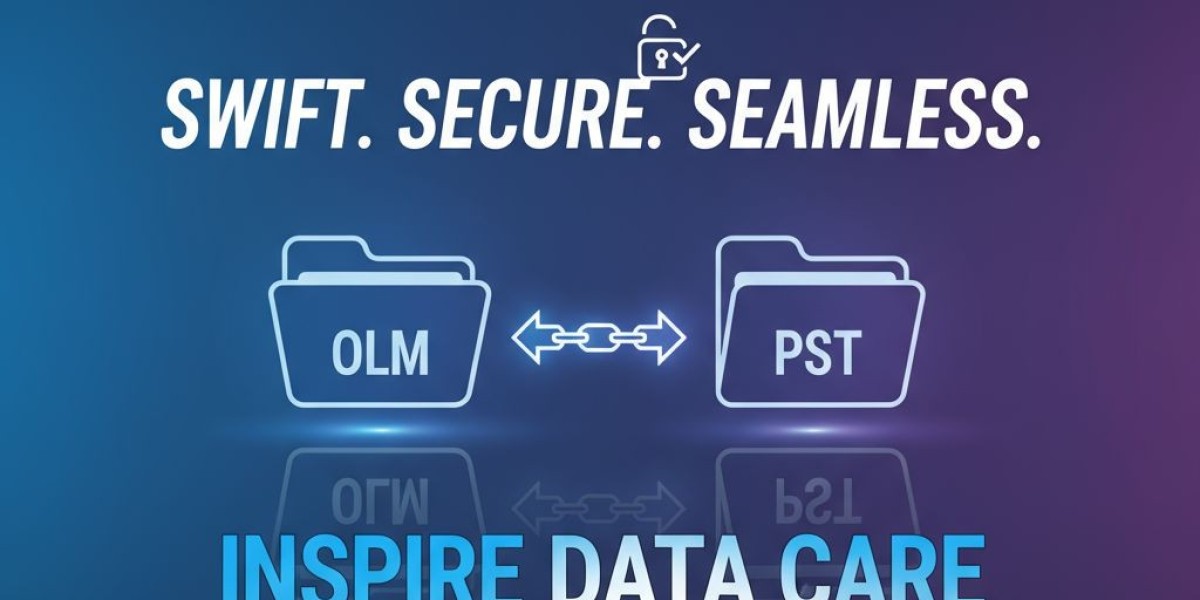Converting your email data from Mac Outlook to Windows Outlook is a frustrating but unavoidable chore for users who swap operating platforms. At the core of the problem lies the file format: Mac Outlook keeps email, address books, and calendars in OLM files, while Windows Outlook keeps data in PST files. As the formats do not intersect, there is no potential direct transfer. This guide provides an in-depth overview of how to convert OLM to PST so your critical emails, contacts, and calendars are transplanted with ease and without data loss. We'll examine both the do-it-yourself processes and the quicker automatic options so your move is seamless.
Why OLM to PST Conversion is Necessary?
Identifying the fundamental difference between OLM and PST files forms the foundation of understanding the need to convert.
OLM (Outlook for Mac) File: This is an Outlook for Mac file archive format. It bundles a set of mailbox items like emails, attachments, contacts, calendar items, tasks, and notes in a single file. But it is usable only within the Mac environment; there's no way an OLM file can be directly opened or imported with any Windows version of Outlook.
PST (Personal Storage Table) File: This is your Windows Outlook's native data file. It's similar to an OLM in that all your mailbox information is kept with it, so it's usable on a Windows-based computer.
Incompatibility of these two proprietary formats is the prime reason for migration. This is necessary in a variety of common scenarios, such as when an organization is shifting from Macs to Windows PCs, when a user is swapping out their personal computer, or when your Mac Outlook data has to go from a user to a Windows-using collaborator.
Manual Methods of OLM to PST Conversion
For users who are more hands-on, there is a manual way involving an IMAP-enabled email account (such as Gmail or Outlook.com). This behaves like a Mac-to-Windows Outlook intermediary. This is done by synchronizing your Mac Outlook information to a server and then synchronizing it back down to your Windows Outlook.
The steps are as follows:
Set Up IMAP Account: If you do not already have an IMAP-enabled email established, establish a new email with an IMAP-enabled provider (i.e., Gmail).
Create in Mac Outlook: Add the new IMAP email address to your Mac Outlook application.
Move Data to IMAP Folder: Create a new folder within the IMAP account's mailbox in Mac Outlook. Manually copy or move all the emails and other items from your OLM-based account into this new folder.
Sync Data: Allow Mac Outlook time to sync and move all of the data relocated to the IMAP server. Time consumed is highly reliant on your mailbox size and internet connection speed.
Set up in Windows Outlook: On your Windows computer, set up the same IMAP account in your Windows Outlook application.
Download and Export: Outlook automatically downloads all data from the server. Once sync is completed, the contents of the IMAP mailbox can then be exported to a new PST file via the Import/Export wizard located in Windows Outlook.
Limitations of the Manual Method Although the method is free, there are serious limitations and perils inherent in it that render it inadaptable to general users, more so to big or significant mailboxes.
Time-Consuming and Tedious: Upload and then downloading data consumes hours or days or more with big mailboxes.
Incomplete Migration: This technique is exceedingly unreliable during non-email migrations of content. Events and contacts also sync unreliably, and data is lost during the transfer.
Risk of Human Mistake: Physically transferring thousands of folders and emails provides room for missed items or erasure through human error.
Data Integrity Concerns: There is a possibility the original folder structure and metadata (read/unread flag, dates, and headers from emails, etc.) are lost.
Requires Technical Knowledge: Installing IMAP accounts and fixing sync issues is complex for non-technical users.
Effortless Solution: Utilizing an OLM to PST Converter
Since there are limitations with the manual operation, it is highly recommended to utilize a professional OLM to PST Converter tool. This software has been specifically designed to directly and perfectly convert all data from an OLM file to a PST file without the danger and hassle of manual operation. These software programs operate offline so your data is kept personal and safe on your own computer.
• Main Characteristics of a Dependable Converter Program
• In selecting a converter, seek software with a built-in suite of functionality in order to realize an easy migration.
• Complete and Exact Conversion: The software must move all components of the mailbox, such as emails, attachments, contacts, calendars, tasks, and notes, without change.
• Preservation of Data Integrity: A good Converter preserves the original folder structure so your data doesn't need formatting. It also saves all email metadata like To, Cc, Bcc, Subject, and received/send dates.
• Large File Support: It must have the ability to support large OLM files without slowing down or causing errors.
• Preview Feature: This helps preview the contents of OLM files before commencing with the conversion, so that you can check out the contents and choose selective items to migrate should there be a need.
Multiple Saving Options: Although the primary agenda is to create a PST file, multi-functional software also provides an option to save data in EML, MSG, or MBOX formats. High Compatibility: Make sure the software is compatible with all versions of Mac's Outlook and Windows Outlook and Windows operating system. Invest in a proficient OLM to PST converter and transfer your emails, calendars, and contacts with ease in just mouse clicks. This automated tool offers the guarantee of your irreplaceable data being processed efficiently and securely, so your Mac-to-Windows migration is as hassle-free as possible.
Get more info - https://www.inspiredatacare.com/olm/olm-to-pst-converter.html






